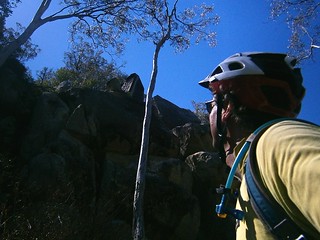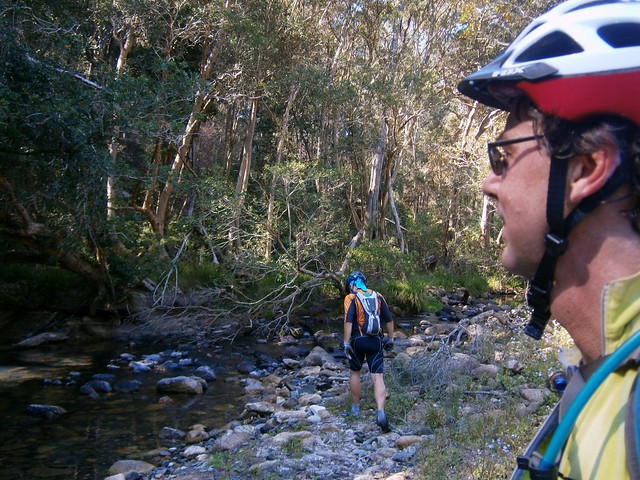
This was a popular ride last time we did it – 32 people came along. This time I thought it would be a great way to showcase some of South-East Queensland’s stunning scenery to my Canadian visitor, Miles.

As usual, the climb up the dirt to the lookut was difficult, but the views at the top were worth it. It was a perfect day for mountain biking, and we enjoyed the panorama of this ancient volcanic caldera.


I thought it was pretty cool that our overseas visitor was able to see this wallaby out on the trail, rather than in a zoo.

We all had a ball riding down the Hennessey Hill Downhill Track. I rode it a lot quicker this time and found that the bike felt a lot smoother. My friend Lance once said to me that it’s often better to fly over obstacles than to bounce over them. I think he’s right!



There were five riders, one woman (Clare) and four men. To her credit, Clare beat all of us up every hill. She’s a very strong rider. This steep little climb was no exception. And as with most steep climbs, rolling down the other side was a lot of fun.

After a big lunch in Woodford, we wound our way back through the Black Rock section of the state forest until we came to this huge log. I’m not sure whether Clare wanted to show us how light her bike was, or how strong she was. Either way, the result was pretty impressive. There’s no way I could do that with my heavy bike. The kitchen sink I carry on the back weighs it down too much 🙂



“Trig Point Hill” is a high point to the west of the forest with some fire-spotting cameras and a transmission tower at the top. It’s a slow grind to the top, but it has one of the best drops on the ride. The challenge is to stay on your bike and ride it to the bottom. As you can see from the photo of Miles at the top of this article, some of us were able to manage it… just.

Others made the wise choice with descents: If you’re not sure you can ride it safely, walk it.


On the ride back to the cars we were lucky to spot a big goanna scrambling up a tree which gave Miles a chance to see more wildlife in its native habitat. We also got some great views of the “Organ Pipes” on the north face of Mount Beerwah.
Today we travelled 63km with about 1,050m of vertical ascent. I burned about 3,600 kcal. It took us just over 6 hours, including a leisurely lunch at Woodford. On a temperate day like today, with a small group, this one rates 7.5 out of 10 on the tough-o-meter.
Total climbing: 1143 m
Average temperature: NAN
Total time: 06:10:44
More data




























































































